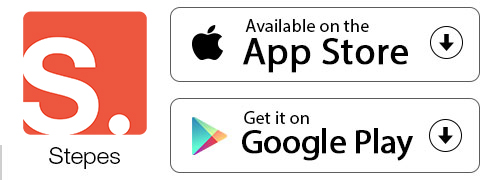 1 Terms
1 TermsHome > Terms > English (EN) > healthcare and reform
healthcare and reform
Healthcare in America is organized around a medical triad comprised by: (1) patients; (2) providers; and (3) payers. Each of these elements and their system of relationships have evolved in a complex interaction of culture with a changing epidemiological environment. America is split over the roles and responsibility of the collective versus those of the individual. “We are all in this together” clashes with “He/she should have known better.” As Americans have built systems to cope with health adversity the European communitarian ideal clashes with the ideal of the frontier household fending for itself in all things.
Over the last century tobacco, alcohol and lack of exercise have taken the place of tuberculosis, measles and whooping cough as major health threats. In a society that often seeks to place blame, a biological shift in potential culpability has accentuated the schism between communitarian and individualistic responses to healthcare. As we search for an answer as to why Americans remain unable to reform the widely recognized failures in their health system, the interplay between the new epidemiology responsibility and the medical triad loom large.
The US healthcare system relies on private insurance companies serving large groups assembled by the workplace. When insurance firms must assemble individual applicants into groups for health insurance, the result is much more costly both administratively and actuarially. Workplace-based insurance offers predictable gaps in any effort to cover the whole population. Not everyone is employed and not everyone is employed in a firm large enough to access low premiums and stable rates. The most glaring exclusions from employment-based insurance have been the poor and the elderly. Medicaid (for the poor) and Medicare (for the elderly) were piecemeal solutions that have staved off wholesale abandonment of the market-based approach. The remaining uninsured are primarily employed in small firms, earning wages high enough to disqualify them from Medicaid, but low enough so that payment of the substantially higher premiums (roughly 25 percent of the earnings of a minimum-wage worker) is not an option. The uninsured continue to number 10–15 percent of the population.
Uninsured patients have great difficulty in obtaining regular healthcare from privatepractice doctors for chronic conditions. For acute care needs of the uninsured, hospitals (but not private-practice doctors) are required by law to offer services to all regardless of the ability to pay Uninsured patients still receive bills from hospitals that they simply have no way of paying. Most US hospitals have adjusted to an environment that requires writing off a certain amount of services as charity care.
Healthcare costs have been another primary source of dissatisfaction with the US healthcare system. Even controlled for an aging population, US healthcare costs rise faster than inflation. Although, at 14 percent of GNP, US healthcare costs are higher than those of any other nation, stable high levels of costs would not be as much of a problem for the economy as the destabilizing effects of rising costs relative to all other goods. For employees whose rising productivity merits them increases in compensation the problem comes home in the typical corporate letter that reads “Congratulations on your five percent raise in compensation; however, because the premium for your health insurance has risen by twenty percent, your take-home pay will only rise by one percent.” For governments committed to funding healthcare entitlements the problem is that tax revenue goes up only as fast as growth plus inflation, but healthcare costs rise faster.
Govern ments must either raise revenues or control healthcare costs.
There is now consensus among health economists that the ultimate cause of rising healthcare costs is the steadily increasing volume and intensity of services due to technology. America is littered with cost-control efforts that have succeeded in achieving one-time reductions in healthcare costs. But the rise in costs always resumes.
No obstacle impedes the introduction of new and costly technology to healthcare, provided the technology is safe. Although some technologies have the potential to lower costs, many do not. The quintessential high-cost technology remains organ transplantation, which can cost $500,000 per quality adjusted life year. Americans’ insistence on fighting death, disease and suffering at every turn frequently leaves no medical options spared as long as there is any hope of success. Health insurers have found themselves powerless in their recurrent efforts to restrain costly medical treatments recommended by doctors. Although some customers might agree to forego coverage for costly life-saving technologies in exchange for lower premiums, American society is reluctant to enforce such contracts. American courts have not yet been able to say to the disgruntled dying, “you chose to spend your money on something other than extensive medical protection, now that you need expensive procedures you must bear the consequences.” By its nature, reform threatens those whose livelihood depends on the status quo. To explain the perpetual failure of healthcare reform in the US it is necessary to invoke more than the power of opponents to reform. America’s failure to provide better access to care stems from the inability of the working uninsured to attract society’s consensus that their hardship merits a social solution. For now, manifest opinion appears to be to withhold the safety net from the uninsured until there is proof that neither their health woes nor their lack of insurance can be solved through personal responsibility For rising healthcare costs, stabilization will eventually come. One cannot live by healthcare spending alone.
The point at which stability comes will speak volumes about just how much money Americans are willing to part with in order to maintain the battle against the onslaughts of nature.
- Part of Speech: noun
- Synonym(s):
- Blossary:
- Industry/Domain: Culture
- Category: American culture
- Company: Routledge
- Product:
- Acronym-Abbreviation:
Other Languages:
Member comments
Terms in the News
Billy Morgan
Sports; Snowboarding
The British snowboarder Billy Morgan has landed the sport’s first ever 1800 quadruple cork. The rider, who represented Great Britain in the 2014 Winter Olympics in Sochi, was in Livigno, Italy, when he achieved the man-oeuvre. It involves flipping four times, while body also spins with five complete rotations on a sideways or downward-facing axis. The trick ...
Marzieh Afkham
Broadcasting & receiving; News
Marzieh Afkham, who is the country’s first foreign ministry spokeswoman, will head a mission in east Asia, the state news agency reported. It is not clear to which country she will be posted as her appointment has yet to be announced officially. Afkham will only be the second female ambassador Iran has had. Under the last shah’s rule, Mehrangiz Dolatshahi, a ...
Weekly Packet
Language; Online services; Slang; Internet
Weekly Packet or "Paquete Semanal" as it is known in Cuba is a term used by Cubans to describe the information that is gathered from the internet outside of Cuba and saved onto hard drives to be transported into Cuba itself. Weekly Packets are then sold to Cuban's without internet access, allowing them to obtain information just days - and sometimes hours - after it ...
Asian Infrastructure Investment Bank (AIIB)
Banking; Investment banking
The Asian Infrastructure Investment Bank (AIIB) is an international financial institution established to address the need in Asia for infrastructure development. According to the Asian Development Bank, Asia needs $800 billion each year for roads, ports, power plants or other infrastructure projects before 2020. Originally proposed by China in 2013, a signing ...
Spartan
Online services; Internet
Spartan is the codename given to the new Microsoft Windows 10 browser that will replace Microsoft Windows Internet Explorer. The new browser will be built from the ground up and disregard any code from the IE platform. It has a new rendering engine that is built to be compatible with how the web is written today. The name Spartan is named after the ...
Featured Terms
gravity
Black holes are black because their gravity is so strong that not even light can can escape. But they do emit radiation usually called Hawking ...
Contributor
Featured blossaries
Browers Terms By Category
- Material physics(1710)
- Metallurgy(891)
- Corrosion engineering(646)
- Magnetics(82)
- Impact testing(1)
Materials science(3330) Terms
- Hats & caps(21)
- Scarves(8)
- Gloves & mittens(8)
- Hair accessories(6)
Fashion accessories(43) Terms
- Architecture(556)
- Interior design(194)
- Graphic design(194)
- Landscape design(94)
- Industrial design(20)
- Application design(17)
Design(1075) Terms
- Authors(2488)
- Sportspeople(853)
- Politicians(816)
- Comedians(274)
- Personalities(267)
- Popes(204)
People(6223) Terms
- SSL certificates(48)
- Wireless telecommunications(3)




